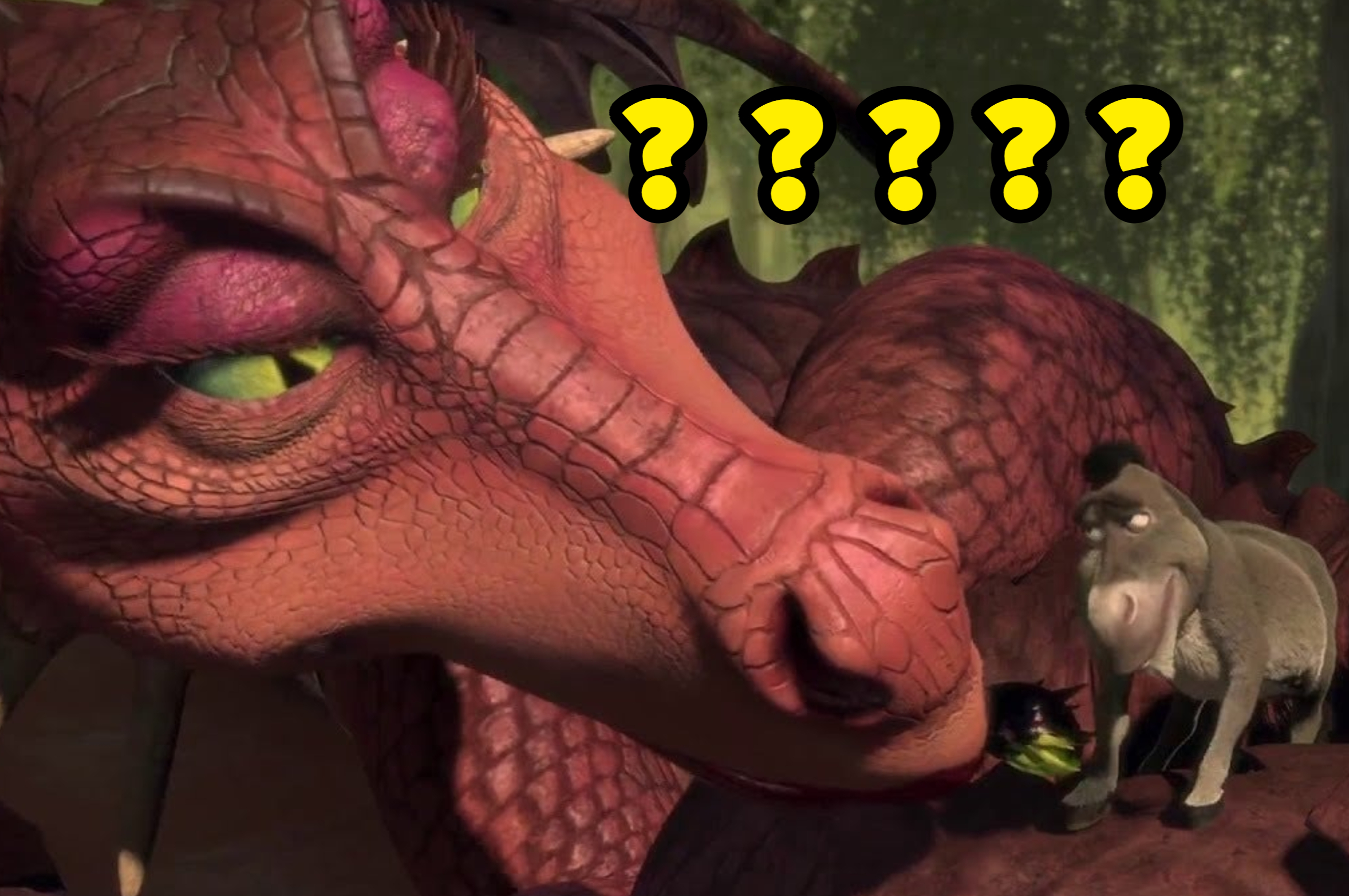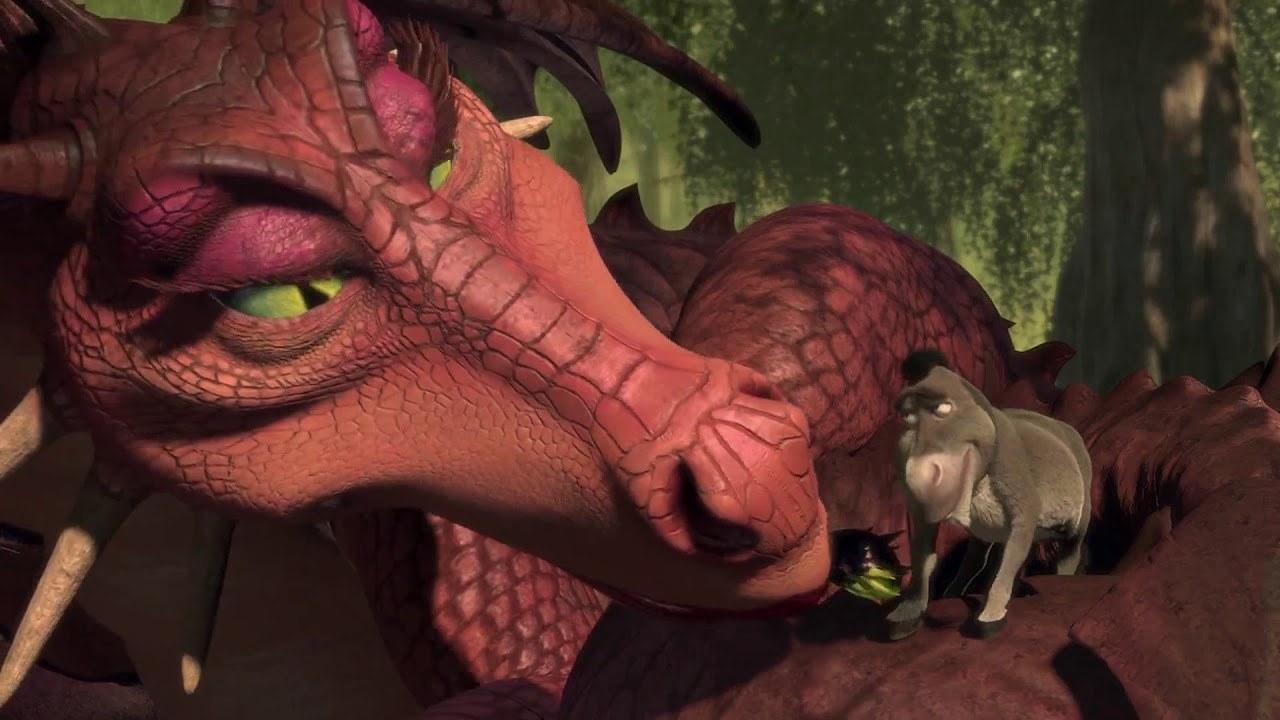In this intriguing tale, we unravel the mysterious origins of Donkey and Dragon‘s offspring. Join us as we explore the enchanting story behind their unique family dynamic.
How Did Donkey And Dragon Have Babies?

Just like anyone else, Donkey and Dragon also enjoy some drinks. Donkey ends up riding on Dragon, taking a low aim and reaching for the stars. Some time later, Dragon gives birth to a baby Dronkey or a Dongon.
When did Donkey and Dragon have kids?
In the Shrek franchise, the Dronkeys take on the role of secondary characters. They are the six offspring of Dragon and Donkey, affectionately referred to by Donkey as his “little mutant babies.” Although briefly introduced at the end of Shrek 2, they become more prominent in Shrek the Third, Shrek the Halls, and Shrek Forever After. The Dronkeys’ names are Debbie, Coco, Bananas, Peanut, Parfait, and Eclair.
Are Donkey and Dragon married?

In the Shrek franchise, Elizabeth, also known as Dragoness or Dragon, is Donkey’s wife. She begins as an antagonist, assigned to guard Princess Fiona in her castle, but eventually befriends Shrek. Throughout the series, she is often referred to simply as “Dragon” with a capital D. However, her proper name, Elizabeth, is revealed in a throwaway line from Shrek 2. As Donkey faints from the transformation potion, he responds to a memory of his wife calling for him and says, “I’m coming, Elizabeth.”
Does Donkey fall in love with the Dragon?

Donkey and Dragon’s initial encounter happens when Dragon catches Donkey breaking into her home while attempting to free the princess she kidnapped. At first, Dragon is ready to harm Donkey for his intrusion, but he quickly resorts to flirting to save his life. Donkey’s intentions are questionable, given his tendency to manipulate others by saying what they want to hear, especially when facing imminent danger. To his surprise, Dragon responds by engaging in an unwanted intimate moment, leaving Donkey visibly and audibly displeased. One could argue that this constitutes sexual assault.
Later, the two cross paths again. Dragon regrets not being physically intimate with Donkey, the person who made flattering remarks while under the threat of her killing him. Strangely, Donkey falls in love with Dragon despite her previous actions of sexual assault. They end up together, leading to a supposedly happy ending.
(Note: The rewritten version maintains the essence of the original text while striving to be more neutral and respectful in language.)
How many babies does Donkey have?
The typical gestation period for a jenny (female donkey) lasts around 12 months, but it can vary between 11 and 14 months. Jennies usually give birth to a single foal, with twin births being rare but more common than in horses. Approximately 1.7 percent of donkey pregnancies result in twins, and about 14 percent of those twin foals survive. Generally, jennies have a lower conception rate compared to horses, which means they become pregnant less often.
After giving birth, jennies come into heat within 9 or 10 days, but their fertility remains low as their reproductive tract takes time to return to normal. Breeders usually wait for one or two additional estrous cycles before rebreeding, unlike with mares. Jennies are highly protective of their foals, and some won’t come into estrus while nursing their young. Due to the time involved in rebreeding and the longer gestation period, a jenny typically has fewer than one foal per year. Donkey breeders, therefore, do not expect to obtain a foal every year as horse breeders often do; they may plan for three foals in four years.
Donkeys can interbreed with other members of the Equidae family, and they are commonly crossed with horses. The hybrid resulting from a jack (male donkey) and a mare is known as a mule, highly valued as a working and riding animal in many countries. Some large donkey breeds, such as the Asino di Martina Franca, the Baudet du Poitou, and the Mammoth Jack, are specifically raised for mule production. Another hybrid, a result of breeding a stallion (male horse) with a jenny, is called a hinny, but it is less common. Like other inter-species hybrids, mules and hinnies are typically sterile. Furthermore, donkeys can also breed with zebras, and the offspring is referred to as a zonkey, among other names.
